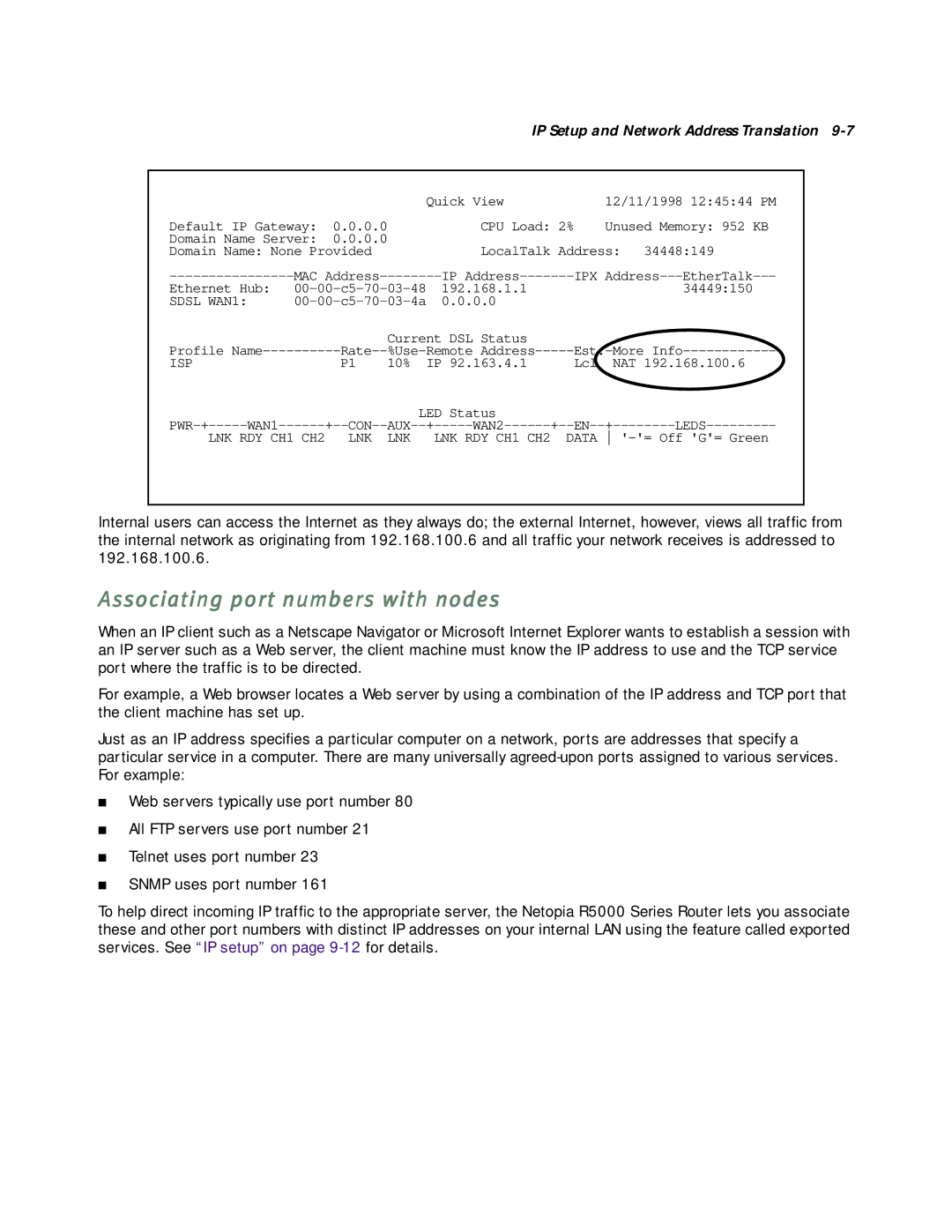
IP Setup and Network Address Translation
|
| Quick View |
| 12/11/1998 12:45:44 PM | |
Default IP Gateway: | 0.0.0.0 | CPU Load: 2% | Unused Memory: 952 KB | ||
Domain Name Server: | 0.0.0.0 |
|
|
| |
Domain Name: None Provided | LocalTalk Address: 34448:149 | ||||
MAC | IP | IPX | |||
Ethernet Hub: | 192.168.1.1 |
| 34449:150 | ||
SDSL WAN1: | 0.0.0.0 |
|
| ||
|
|
|
| Current DSL Status |
|
|
|
| ||
Profile | ||||||||||
ISP |
|
| P1 | 10% | IP 92.163.4.1 |
| Lcl | NAT 192.168.100.6 | ||
|
|
|
|
| LED Status |
|
|
|
| |
LNK RDY CH1 CH2 | LNK | LNK | LNK RDY CH1 CH2 | DATA | ||||||
Internal users can access the Internet as they always do; the external Internet, however, views all traffic from the internal network as originating from 192.168.100.6 and all traffic your network receives is addressed to 192.168.100.6.
Associating port numbers with nodes
When an IP client such as a Netscape Navigator or Microsoft Internet Explorer wants to establish a session with an IP server such as a Web server, the client machine must know the IP address to use and the TCP service port where the traffic is to be directed.
For example, a Web browser locates a Web server by using a combination of the IP address and TCP port that the client machine has set up.
Just as an IP address specifies a particular computer on a network, ports are addresses that specify a particular service in a computer. There are many universally
■Web servers typically use port number 80
■All FTP servers use port number 21
■Telnet uses port number 23
■SNMP uses port number 161
To help direct incoming IP traffic to the appropriate server, the Netopia R5000 Series Router lets you associate these and other port numbers with distinct IP addresses on your internal LAN using the feature called exported services. See “IP setup” on page
